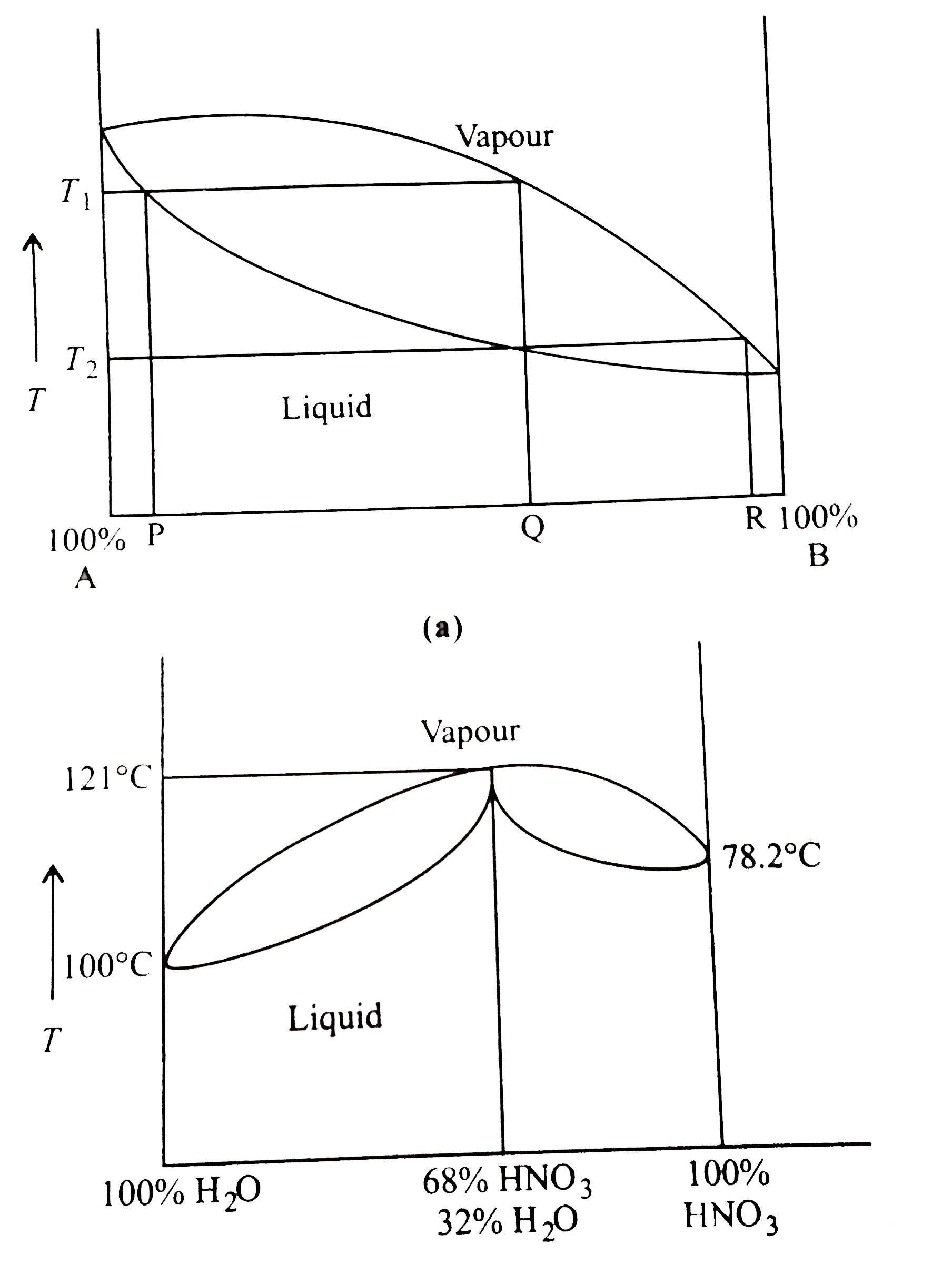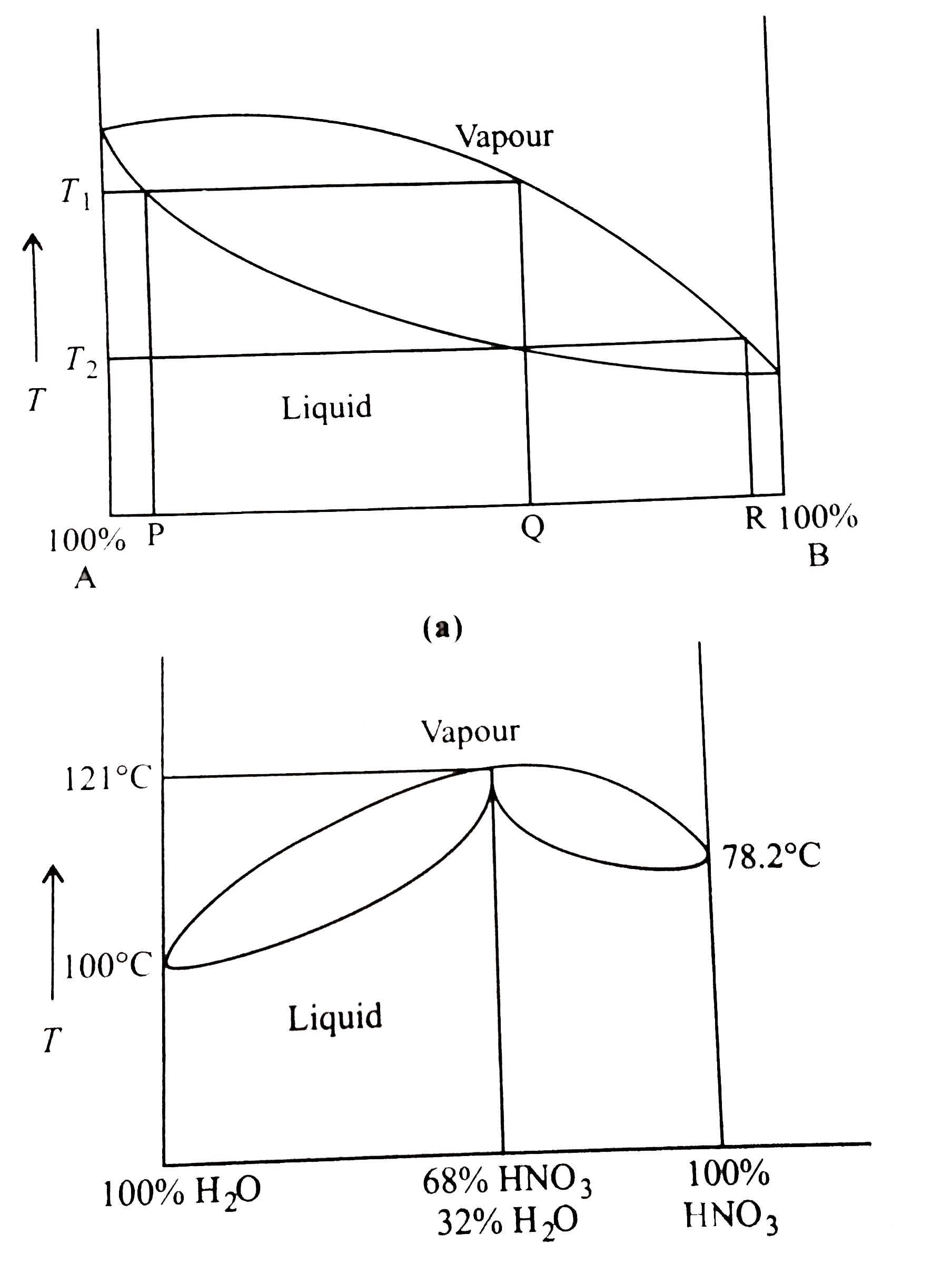Can we separate two liquids A (b.p. 353 K) and B (b.p. 365 K) present in a mixture by simple distillation ?
No, the method of simple distillation cannot be used here because the vapours of both the vapours of both the liquids will be formed simultaneously and will condense together in the receiver. The separation can be done by fractional distillation.
Topper's Solved these Questions
- ORGANIC CHEMISTRY - SOME BASIC PRINCIPLES & TECHNIOUESBOOK - DINESH PUBLICATIONCHAPTER - ORGANIC CHEMISTRY - SOME BASIC PRINCIPLES & TECHNIOUESEXERCISE - VALUE BASED QUESTION
3 Videos
- ORGANIC CHEMISTRY - SOME BASIC PRINCIPLES & TECHNIOUESBOOK - DINESH PUBLICATIONCHAPTER - ORGANIC CHEMISTRY - SOME BASIC PRINCIPLES & TECHNIOUESEXERCISE - Problems For Practice
39 Videos
- ORGANIC CHEMISTRY - SOME BASIC PRINCIPLES & TECHNIOUESBOOK - DINESH PUBLICATIONCHAPTER - ORGANIC CHEMISTRY - SOME BASIC PRINCIPLES & TECHNIOUESEXERCISE - SHORT ANSWER TYPE QUESTION
33 Videos
- NUCLEAR AND RADIO CHEMISTRYBOOK - DINESH PUBLICATIONCHAPTER - NUCLEAR AND RADIO CHEMISTRYEXERCISE - Evaluate Yourself
45 Videos
- P BLOCK ELEMENTS (GROUP 13 AND 14 )BOOK - DINESH PUBLICATIONCHAPTER - P BLOCK ELEMENTS (GROUP 13 AND 14 )EXERCISE - Straight obj.
17 Videos
Similar Questions
Suggest methods for the separation of the following mixtures :
(a) a mixture of liquid A (b.p. 365 K) and liquid B (b.p. 355 K)
(b) a mixture of liquid C (b.p. 348 K) and liquid D (b.p. 478 K).
View SolutionSuggest methods for the separation of the following mixtures :
(a) a mixture of liquid A (b.p. 365 K) and liquid B (b.p. 355 K)
(b) a mixture of liquid C (b.p. 348 K) and liquid D (b.p. 478 K).
View SolutionSuggest methods for the separation of following mixtures:
(i) A mixture of liquid A (b.p. = 356 K) and liquid B (b.p. = 365 K)
(ii) A mixture of liquid C (b.p. = 360 K) and liquid D (b.p. = 395 K)
(iii) A liquid 'E' (b.p. = 563 K) having decomposition temperature 450 K.
View SolutionCan we separate the components of azeotropic mixture by distillation?
View SolutionCan we separate the components of azeotropic mixture by distillation?
View Solution(a). If both (A) and (R) are correct and (R) is the correct explanation for (A).
(b). If both (A) and (R) are correct and (R) is the correct explanation for (A).
(c). If (A) is correct and (R) is incorrect.
(d). If (A) is incorrect and (R) is correct. ltbr> (e). If both (A) and (R) are incorrect.
Q. Assertion (A): Benzene (boiling point 353K) and methanol (boiling point 338K) are separated by simple distillation.
Reason (R): Fractional distillation is used to separate two liquids from their mixture when their boiling points differ by 20∘ or so.
View Solution(a). If both (A) and (R) are correct and (R) is the correct explanation for (A).
(b). If both (A) and (R) are correct and (R) is the correct explanation for (A).
(c). If (A) is correct and (R) is incorrect.
(d). If (A) is incorrect and (R) is correct. ltbr> (e). If both (A) and (R) are incorrect.
Q. Assertion (A): Benzene (boiling point 353K) and methanol (boiling point 338K) are separated by simple distillation.
Reason (R): Fractional distillation is used to separate two liquids from their mixture when their boiling points differ by 20∘ or so.
View SolutionThe technique used to separate the two liquids have close in their boiling paints is?
Simple distillation
Chromatography
Crystallization
Fractional distillation
View Solutionrepresents the distillation of mixture of liquid A and liquid B which gives both of pure liquid A and B . Represents the azeotropic mixture of HNO3 and H2O which distillation gives an azeotropic mixture and either of pure liquid. We cannot separate both the pure liquid, i.e., H2O and HNO3.
What is the result of distilling a mixture of 80%HNO3 and 20%H2O?
(a)Pure H2O and azeotropic mixture can be separated.
(b)Pure H2O and pure HNO3 can be separated.
(c)Pure HNO3 and azeotropic mixture can be separated.
(d)None of these
View Solutionrepresents the distillation of mixture of liquid A and liquid B which gives both of pure liquid A and B . Represents the azeotropic mixture of HNO3 and H2O which distillation gives an azeotropic mixture and either of pure liquid. We cannot separate both the pure liquid, i.e., H2O and HNO3.

What is the result of distilling a mixture of 50%HNO3 and 50%H(2)O ?
a.Pure water and azeotropic mixtue can be separated.
b.Pure H2O and pure HNO3 can be separated.
c.Pure HNO3 and azeotropic mixture can be separated.
d.None of these
View Solution
